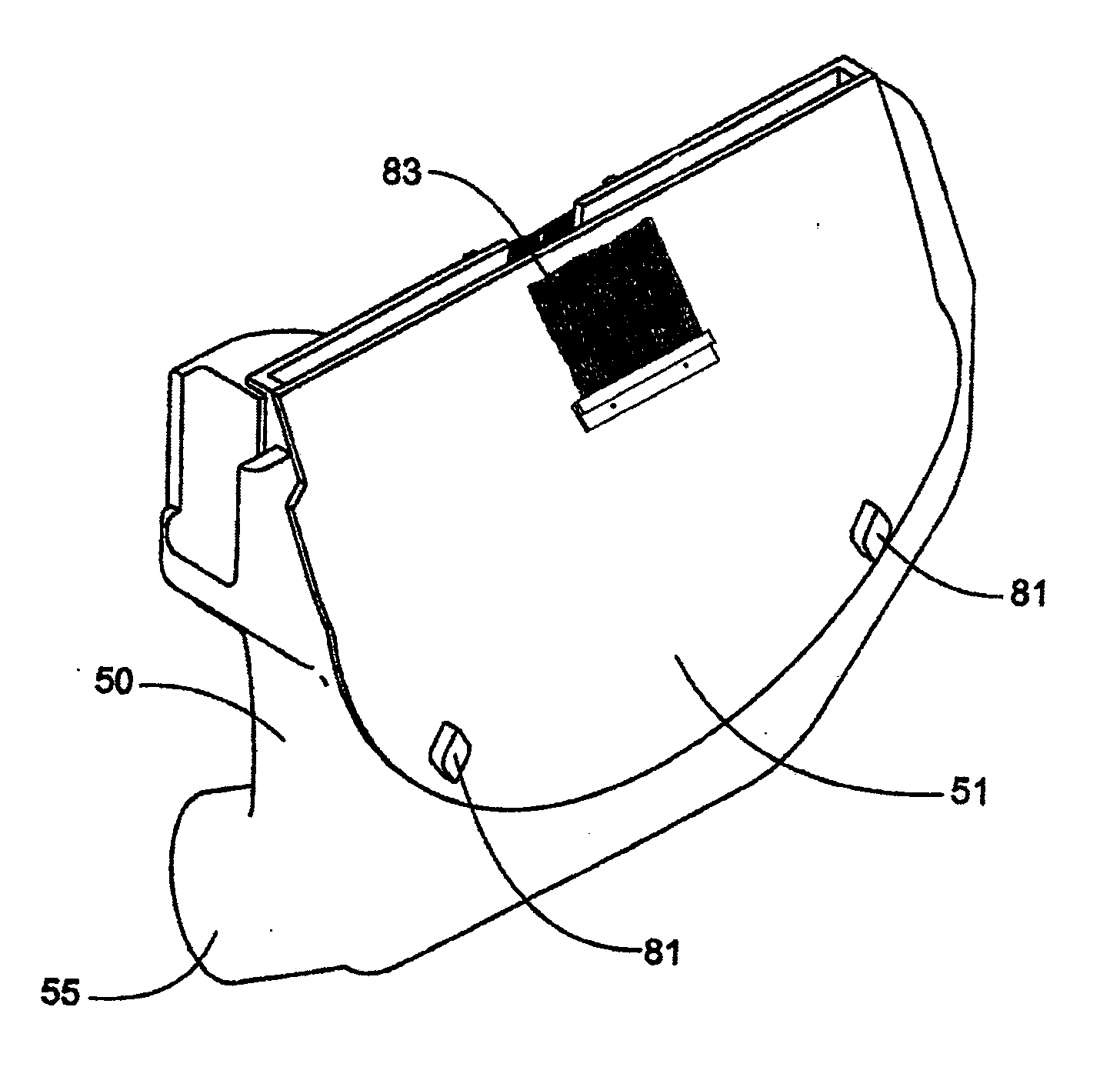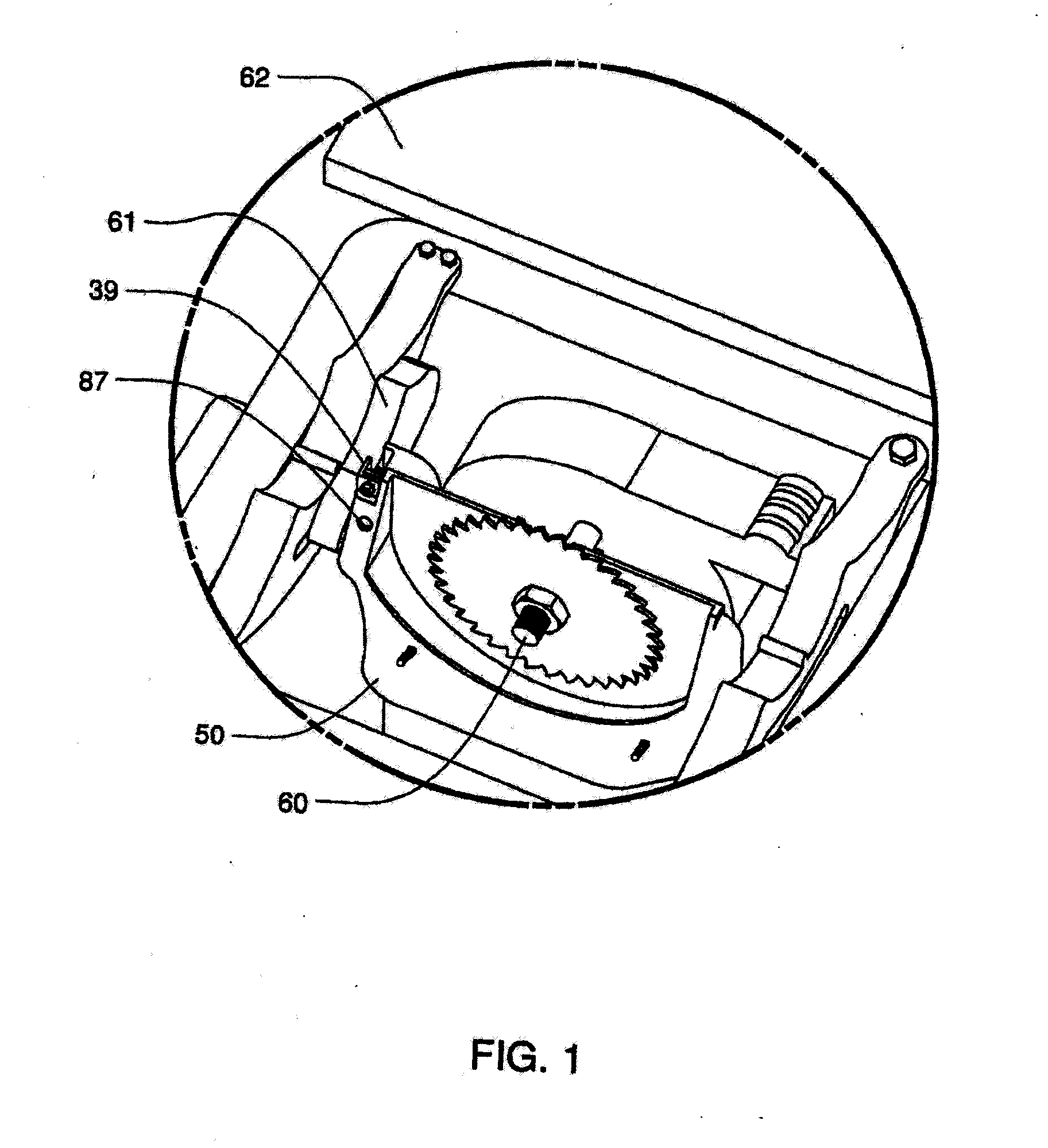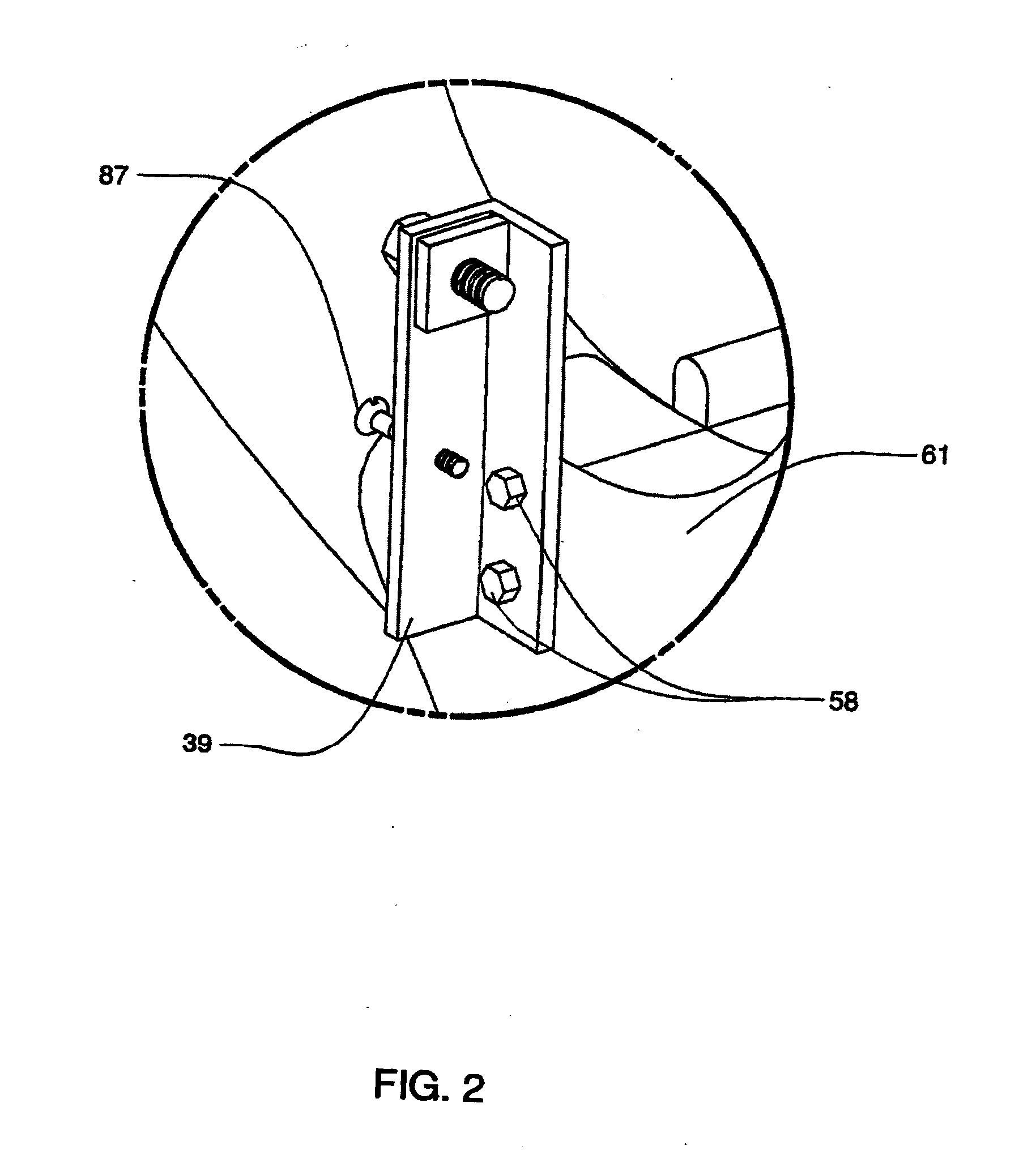Blade enclosure for a table saw
a technology of blade enclosure and table saw, which is applied in the field of power saw system, can solve the problems of high toxic chemicals including various glues, adhesives and preservatives used in processed wood products, high toxic when inhaled as a component of saw dust, and the inability of saw dust to escape, so as to reduce the exposure of table saw operators and minimize the environmental exposure of saw operators
- Summary
- Abstract
- Description
- Claims
- Application Information
AI Technical Summary
Benefits of technology
Problems solved by technology
Method used
Image
Examples
Embodiment Construction
[0018]An exemplary embodiment of a blade enclosure for dust collection and containment in accordance with the present invention is illustrated schematically in FIGS. 1 and 3. The table saw to which such blade enclosure is adapted may be any type, model or configuration of table saw suitable for cutting wood, plastic or other suitable material that incorporates one or more of the various aspects of the present invention. The present invention includes complete saws as well as systems, parts, pieces or kits of parts which may be mounted on existing table saws to adapt or retrofit them in accordance with one or more of the various aspects of the present invention.
[0019]One aspect of the present invention is a blade enclosure for saw dust containment and collection, as shown in FIGS. 1 through 5, for a table saw which may be used with a dust containment and collection system for a table saw. Blade enclosures according to the present invention contribute to safe saw operation, not only b...
PUM
| Property | Measurement | Unit |
|---|---|---|
| angle | aaaaa | aaaaa |
| internal diameter | aaaaa | aaaaa |
| angles | aaaaa | aaaaa |
Abstract
Description
Claims
Application Information
 Login to View More
Login to View More - R&D
- Intellectual Property
- Life Sciences
- Materials
- Tech Scout
- Unparalleled Data Quality
- Higher Quality Content
- 60% Fewer Hallucinations
Browse by: Latest US Patents, China's latest patents, Technical Efficacy Thesaurus, Application Domain, Technology Topic, Popular Technical Reports.
© 2025 PatSnap. All rights reserved.Legal|Privacy policy|Modern Slavery Act Transparency Statement|Sitemap|About US| Contact US: help@patsnap.com



